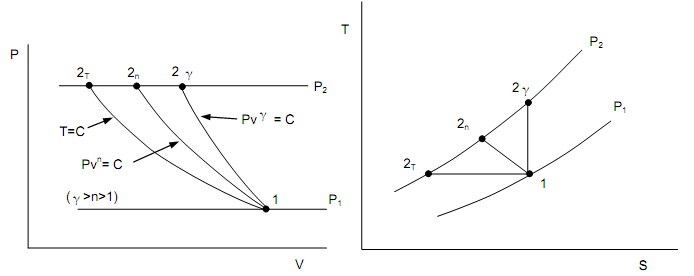Compression Process
A gas compression procedure may be designed either to be adiabatic or to include heat transfer, based on the purpose for which the gas is compressed. When the compressed gas is to be employed promptly in an engine or in a combustion chamber, adiabatic compression might be desirable in order to acquire the maximum possible energy in the gas at the end of compression. In most of the application, though, the gas is not used promptly though is stored in a tank for use as required. The gas in the tank loses heat to the surroundings and reaches room temperature whenever finally employed. In this condition the overall effect of compression and storage is simply to raise the pressure of the gas without change of temperature. It can be shown that when the gas is cooled during the compression, rather than after the procedure, the work needed will be less than for adiabatic compression. A further benefit of cooling is the decrease of volume and the subsequent reduction of pipeline losses. For this purpose, as cooling throughout the compression is not very efficient, after-coolers are frequently used to cool the gas leaving a compressor.
In analysis of the effect of cooling on compression procedure, it is customary to investigate two specific idealized situations, namely reversible adiabatic and reversible isothermal and also a common case of reversible polytropic process (pvn = constant). The paths of such procedures are plotted in figure below.

Figure: Compression Process